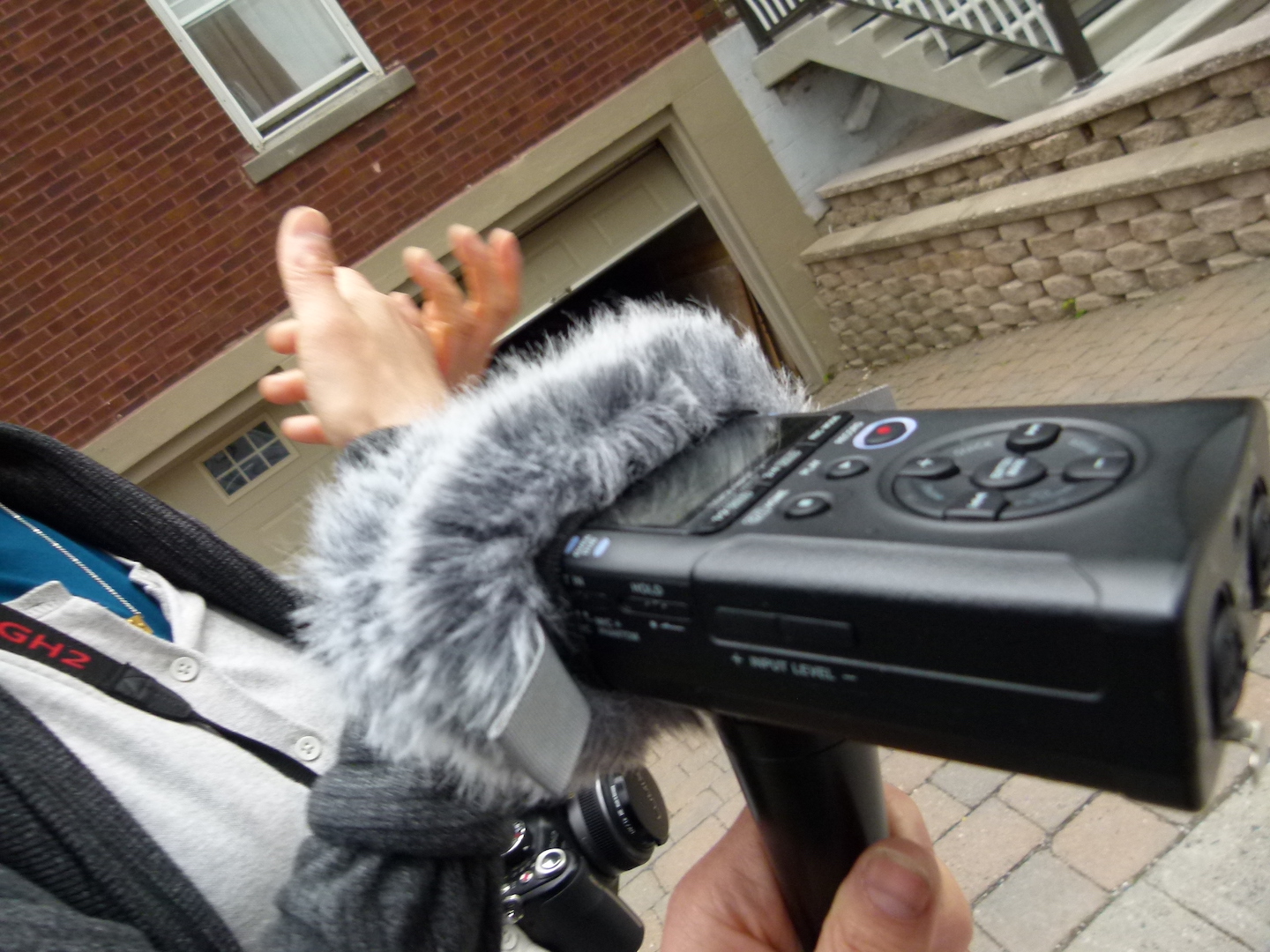An Invitation
Walking With is an invitation to listen, to walk and to reflect
Photo: Pohanna Pyne Feinberg
To LISTEN
Walking With offers insights from twelve artists who walk as an aspect of their practice. The audio-visual portraits are made from photographs and audio recordings gathered by Pohanna Pyne Feinberg, the project curator-producer, during interviews with each artist. Excerpts from these conversations were then montaged together to offer a window into the artists' insights.
You are now invited to join us in reflection about the pedagogical potential of walking. How and what do you learn while walking?
Each original interview took place in a location chosen by the artist (between 2014 and 2018). The minimum duration of the interviews was two hours, therefore, the excerpts presented in the audio-visual portraits are highlights that were selected (by the curator/producer with the approval of the artists) from much lengthier, in-depth conversations. To learn more about the artists' work, please follow the provided links below each artist's biography.
By featuring artists who are women, Walking With is an opportunity to nuance and enrich the international walking art discourse with their compelling stories. By making these interviews public as audio recordings, the intention is for the artists' ideas to be heard with the tones, timbres, rhythms, accents, pauses and inflections that emanate from their lived experiences.
Tio'tià:ke - Mooniyang - Montréal is a culturally, politically and linguistically complex region. All of the contributing artists are capable of communicating in more than one language, but they chose to speak with me in English, which is my first language. Sylvie Cotton and Sylvie Laplante are the exception and they spoke in French, which is their first language (subtitles are provided).
How to Listen ?
Walking With is presented on-line so that it can be accessed internationally. You could explore the website with a stationary computer or on a mobile device. If you choose to listen while moving around outside, please remain of aware of your surroundings -particularly moving vehicles and other potential hazards. Sitting while listening is recommended.
The portraits are presented alphabetically, but they can be listened to in any order. I recommend to start by reading the artist’s biography to get a sense for the themes they might address in their portrait. You could decide to listen to one artist, take some time to consider their insights and then return to another later.
Photo: Pohanna Pyne Feinberg
TO WAlk
Walking generates embodied and emplaced knowledge through encounters with the dynamics of place. We become more of ourselves with each step. Likewise, as we leave our trace, our presence shapes where we walk.
As the audio-visual portraits are intended to help convey, as we walk we engage in a co-creative and generative interconnection with place.
As the artists discuss, walking is personal as well as political. How one walks depends on their relationship to place - including how they are treated based on gender, cultural identity, race, sexuality, and class. Some people are monitored, controlled and violently targeted more than others. Several of the artists speak about the limitations and challenges that can be associated with walking and have developed works that comment specifically on these concerns.
How one relates to walking also depends upon physical ability and can certainly include movements facilitated by crutches, sticks, canes, wheels, orthotics and other mobility aids. Walking can be slow and can include sitting to take a rest. A range of movements and paces, including stillness, are discussed by the artists.
Photo: Pohanna Pyne Feinberg
TO reflect
Each audio-visual portrait is accompanied by the artist’s biography and links to their websites where you can learn more about their work.
There is also a section called “Reflections To Walk With”. The proposed questions are inspired by the artists’ insights and are intended as points of departure for you to consider the significance of walking in your life.
How do the artists’ perspectives resonate with your own?
Or, how do they differ from your lived experiences?
How would you describe how walking influences your understanding of the world?
Do you have stories to share about how walking contributes to your creative process?


